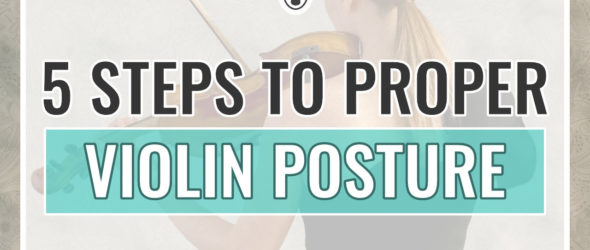Learning good violin posture is so important because it is the foundation of all playing! Proper posture can be a lifelong journey with adjustments, but it is so important to have a good setup. It allows you to hold the violin up without pain and play better in tune. Playing the violin can be a strenuous activity because it contorts the body in unnatural ways, so staying relaxed is key. Read below for the main points of good violin posture and how to correct yours if need be.
What is a Good Violin Posture?
Good violin posture means setting your body up to play the violin correctly and without pain.
Though some music is performed sitting down, I will teach you how to stand first and address sitting later.
Beautiful posture starts from the ground up. This means aligning your feet in a way that offers you balance and strength. Think about a tree – it needs strong roots to be able to grow leaves. Through the following steps, you can properly get your setup right.
1. Legs Form the “V” Shape
Start with your stance. If you are standing, let’s begin with feet in the “rest position.” This means keeping your two feet together. Then zip your left foot to the side to create a “V” shape in preparation for putting your instrument in the “playing position.” Once ready, open your stance so your feet are hip-width apart. Your left foot can be slightly forward. You should be able to sway back and forth and feel your balance. Now you are ready to bring your violin to your upper body.
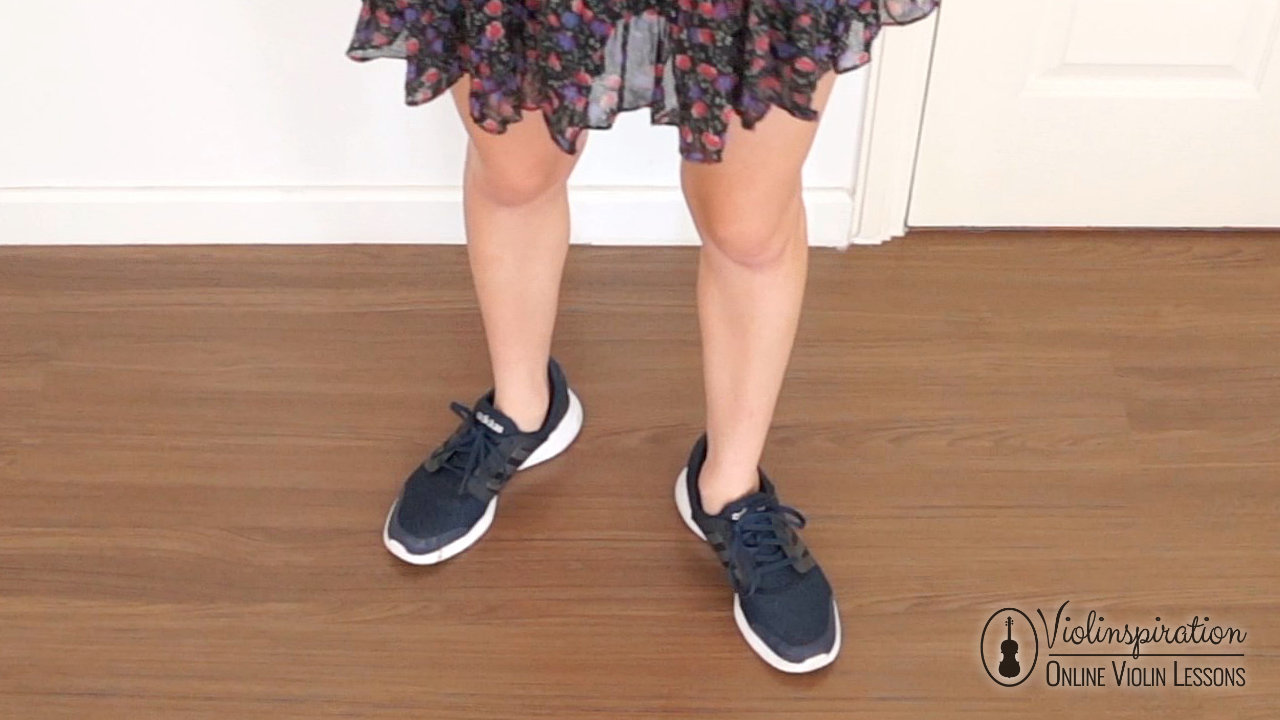
2. Left Collar Bone and Shoulder Support the Violin
Bring the violin up to your left shoulder. Turning your head to the left slightly, bring the instrument up to your left shoulder. It should sit on top of your left collar bone and shoulder. The weight of your head through the chin rest and the shoulder rest should support the violin.
Finding both a chinrest and a shoulder rest that fit your specific body is very important. The best would be to try out different options to make sure your setup doesn’t cause any pain to you while you’re playing. I already covered the topic of choosing a chinrest in one of my earlier blog posts. In the article “The Essential Guide to Using a Violin Shoulder Rest” I gathered the best tips for choosing a shoulder rest, putting it on a violin, finding a way to fit it into a violin case, and more. If you’re looking for an overview of different shoulder rests with their pros and cons, make sure to check out this article: “Best Violin Shoulder Rest: Top 10 of a Professional Violin Teacher.”
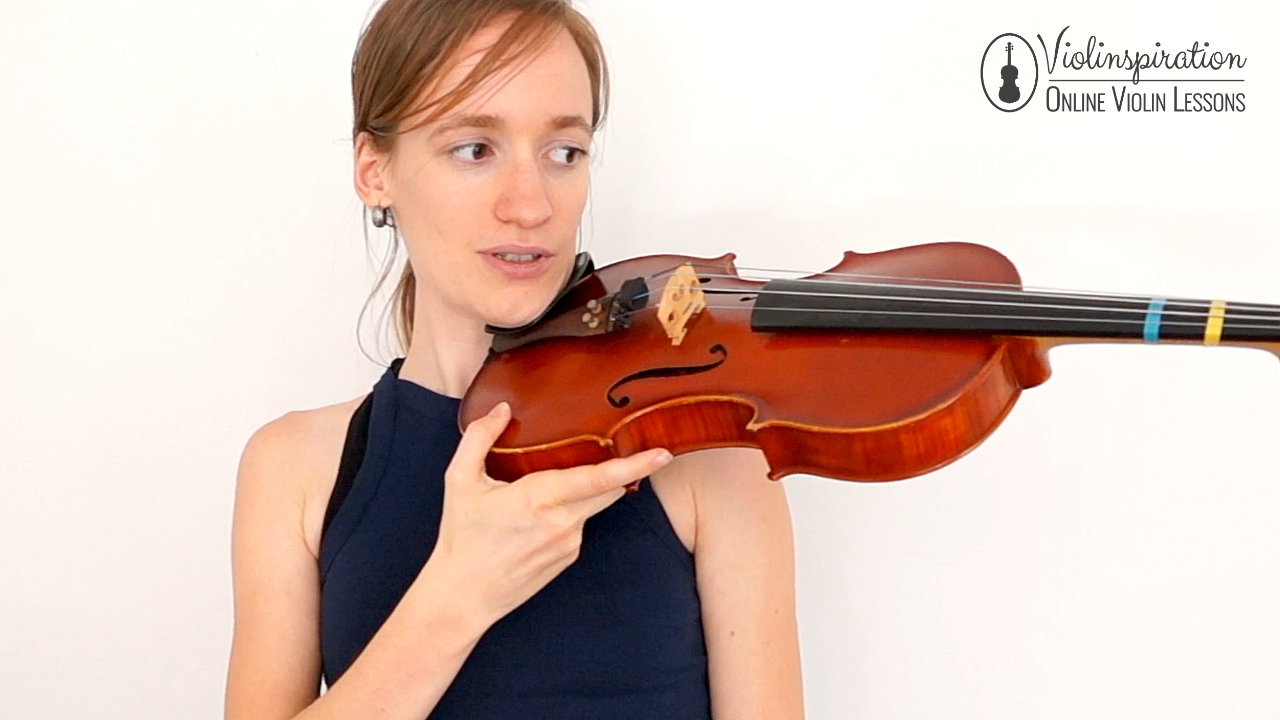
You should feel like the violin easily rests on your shoulder. It is super important to keep your back and spine relaxed so if you feel your shoulder cramping up, restart this step. The violin should be parallel to the floor, like a table.
3. Left Hand Loosely Holds the Violin’s Neck
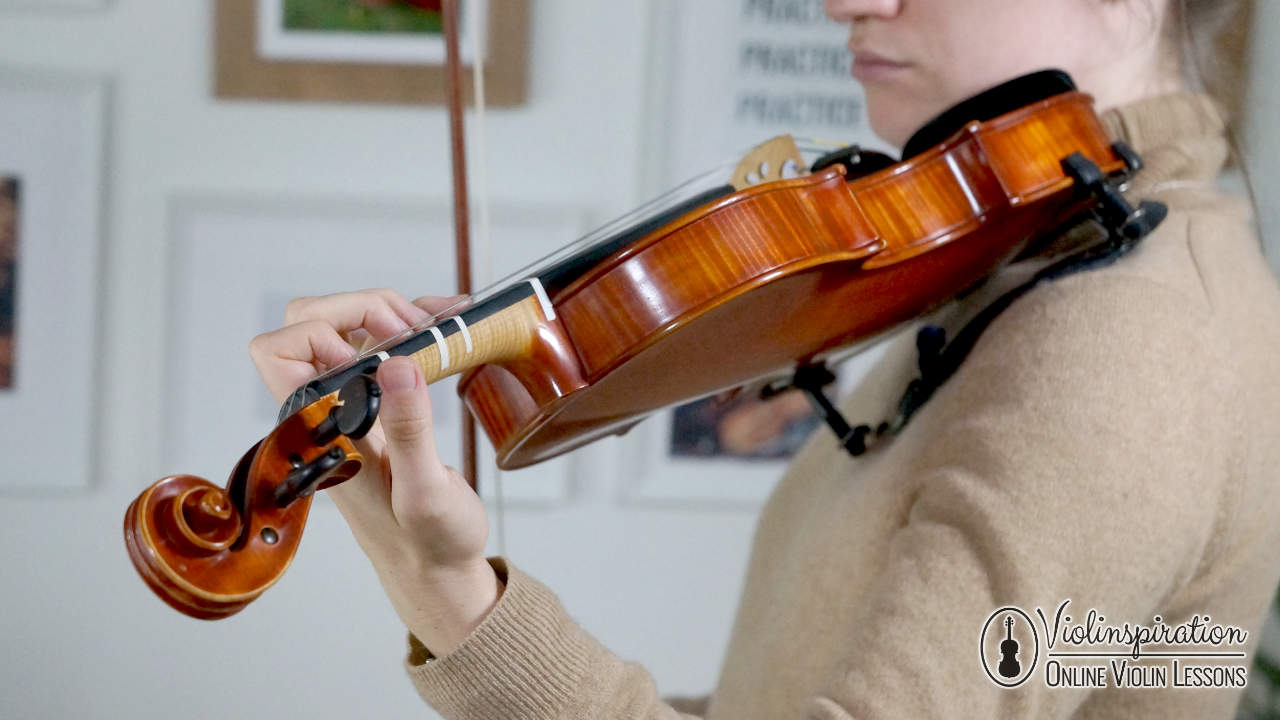
Position your left hand around the violin neck loosely. The left elbow should be under the violin, hanging loosely. With round fingers and a straight wrist, gently put each finger on the fingerboard. The thumb should be directly across from the index finger without squeezing the violin. There should be space between your palm and the neck of the violin, like a tunnel. Your left hand need not squeeze the neck.
4. Relaxed Bow Hold
Create a bow hold with your right hand. A proper bow hold consists of nice curved and relaxed fingers. The summary of a great bow hold is to have the thumb across from the curved middle and ring finger. The middle and ring fingers should be on the bulk of the frog, covering the eye. Then add the pinky on top of the stick and finally hang the index finger over the stick. The bow should always be loose and without tension.
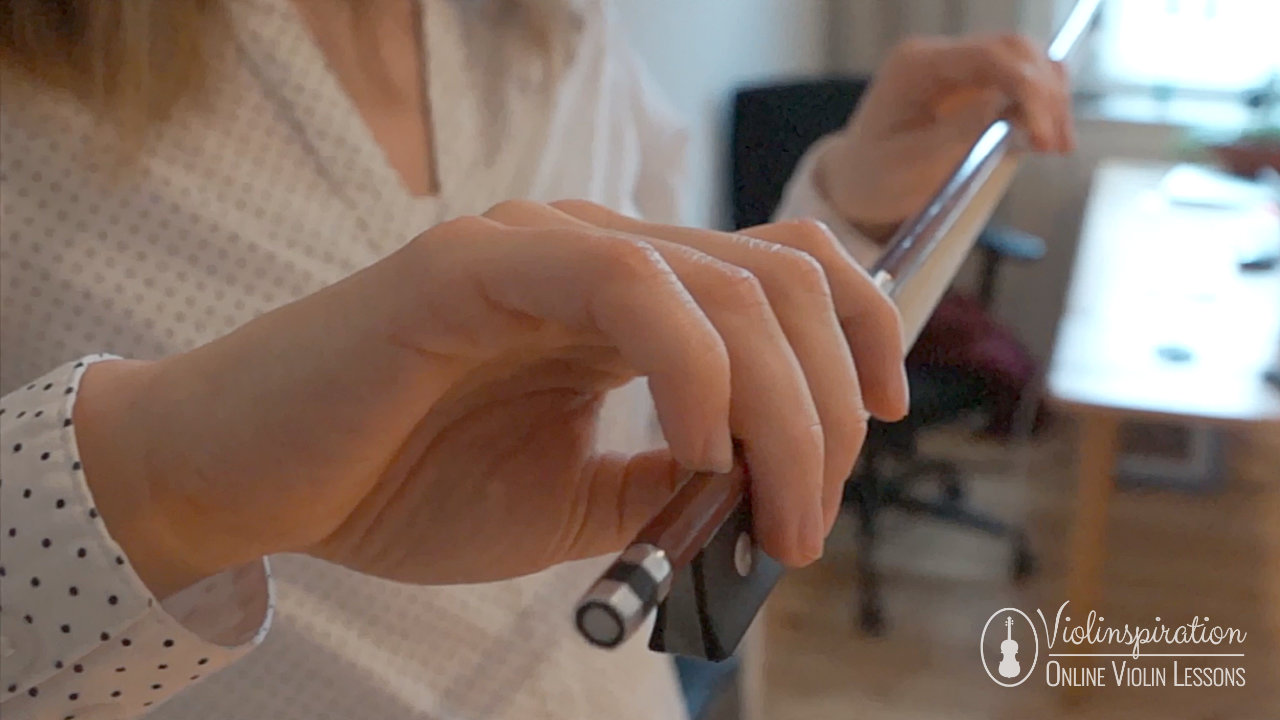
5. Relaxed Right Arm
Keep a relaxed right arm. The right arm works as a unit – every time you move the bow, you are moving your shoulder, elbow, wrist, and fingers together. The more weight you use from your right shoulder, the more sound you will produce. If you are using too much weight, the sound might be scratchy. If you aren’t using enough though, the sound will be thin and ghostly. Notice that when you go on different strings, you have to change the angle of your elbow. When you’re on the G string, your right elbow is much higher than when it is on the E string. The right side is how we produce all the sound. To experiment with sound production, try using different parts of the bow – upper half, lower half, or the middle. Then see how moving the bow’s placement, either closer to the fingerboard or closer to the bridge, affects sound too. Our instrument is incredible in that we can achieve so many colors and dynamics just with the bow.
Great violin posture comes from adjusting the violin to fit your body. The most important thing is to keep your body in alignment.
How to Practice Proper Violin Posture?
One of the best ways to practice proper violin posture is to look at yourself in the mirror. This way you’ll be able to assess your setup in real-time and adjust your hands, elbows, arms, shoulders, back, and feet.
As a teacher, I like to do a “body scan” of my students’ setup but you can also do this alone at home. I start by looking at a well-balanced stance with the left foot slightly in front of the right. Then I look at the violin rests to ensure the instrument is gently resting on the left side. Shoulders should be nice and relaxed. Next, I check for a tension-free, curved bow hold. Especially while standing, it is important that the spine is straight.
If you are a member of Julia’s Violin Academy and you’re not sure whether your violin posture is correct, submit your video to get feedback from a professional violin teacher.
FAQ
How Do You Stand to Play the Violin?
With your feet hip-width apart, move your left foot slightly in front of the right and put the violin up. The violin should be to the left side of your center since your chin is on the chinrest and the violin is on top of your left shoulder.
It should never be in the dead center of your body. Make sure your shoulders are relaxed. A violin doesn’t weigh that much so there’s no need to hunch or slouch!
How Do Violinists Sit?
Violinists sit on a chair that doesn’t have armrests and doesn’t swivel, with both feet on the floor and even weight between them. The violin is held the same way as while standing. The right leg is often lower than the left one to avoid hitting it with the right hand while playing on the E string.
Violinists often sit while playing chamber music or in the orchestra. Also, violinists practice this way, but it can be easy to develop bad habits.
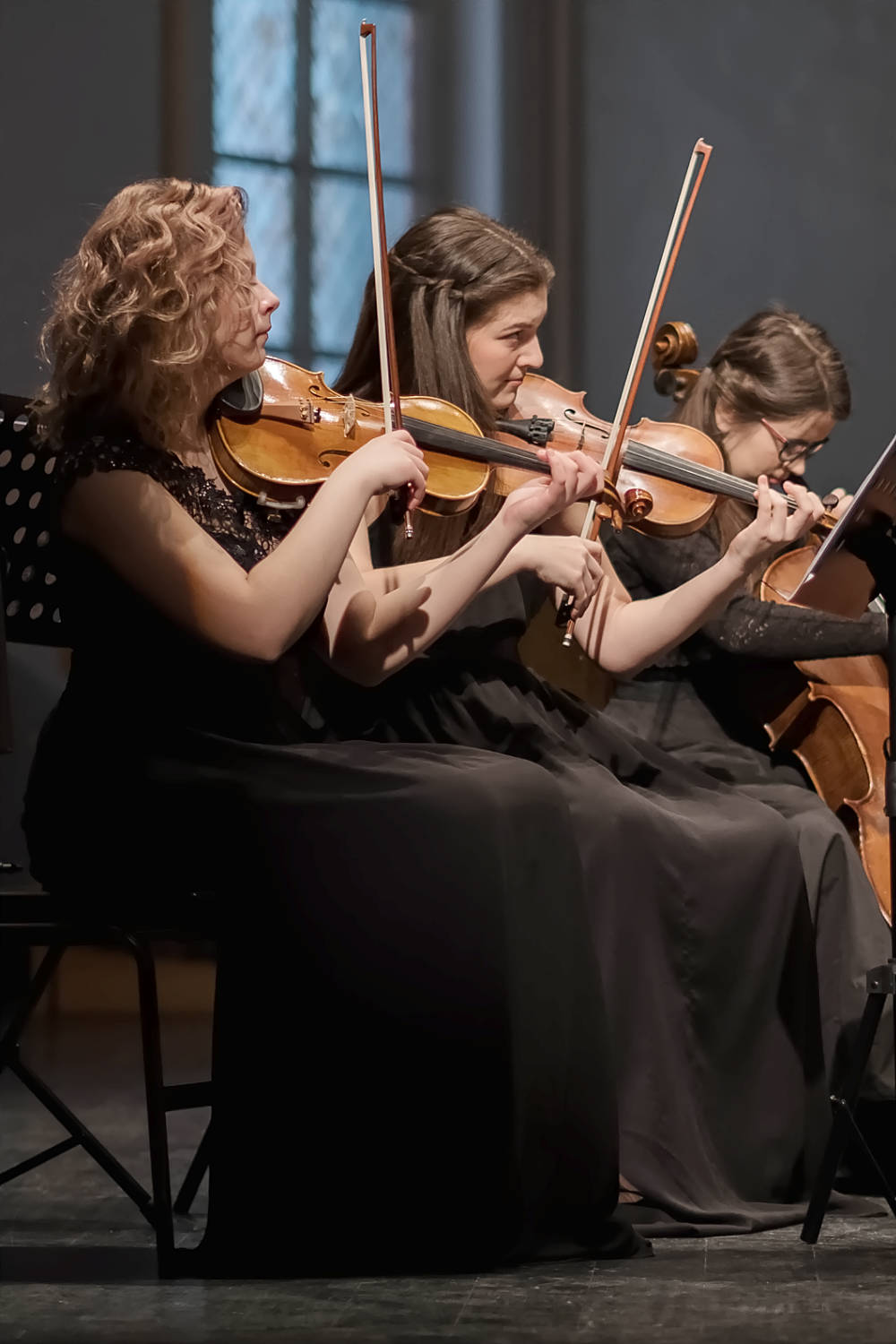
Is Violin Bad for Posture?
No, playing the violin is not bad for posture. Lots of the mechanics feel unnatural to the body, but correct posture and daily stretching will not damage your body. If anything, it will train your brain to check in with your body more often to examine for small tensions.
How Do I Fix My Posture on My Violin?
To fix posture, start slowly. You likely have some combination of good and bad habits if you already play the violin.
To fix your violin posture stop and wiggle different body parts to see how they react. Sway gently to unlock your knees. Support the violin up just with your head and shoulder to see shoulder strain. Tap each finger on the bow and on the neck to check for tightness. Use a mirror to double-check your posture.
Or if you notice you have pain in a particular part of your body, zone in on that and try to figure out where it could be coming from. It likely is coming from a bigger muscle than you think (i.e. your back, shoulder, etc).
How to Hold a Violin When Not Playing?
A violin can be held from its neck or it can be in the rest position. This is done by putting the instrument under your right arm with the wrist supporting it from underneath. Your upper arm should be resting over the tailpiece.
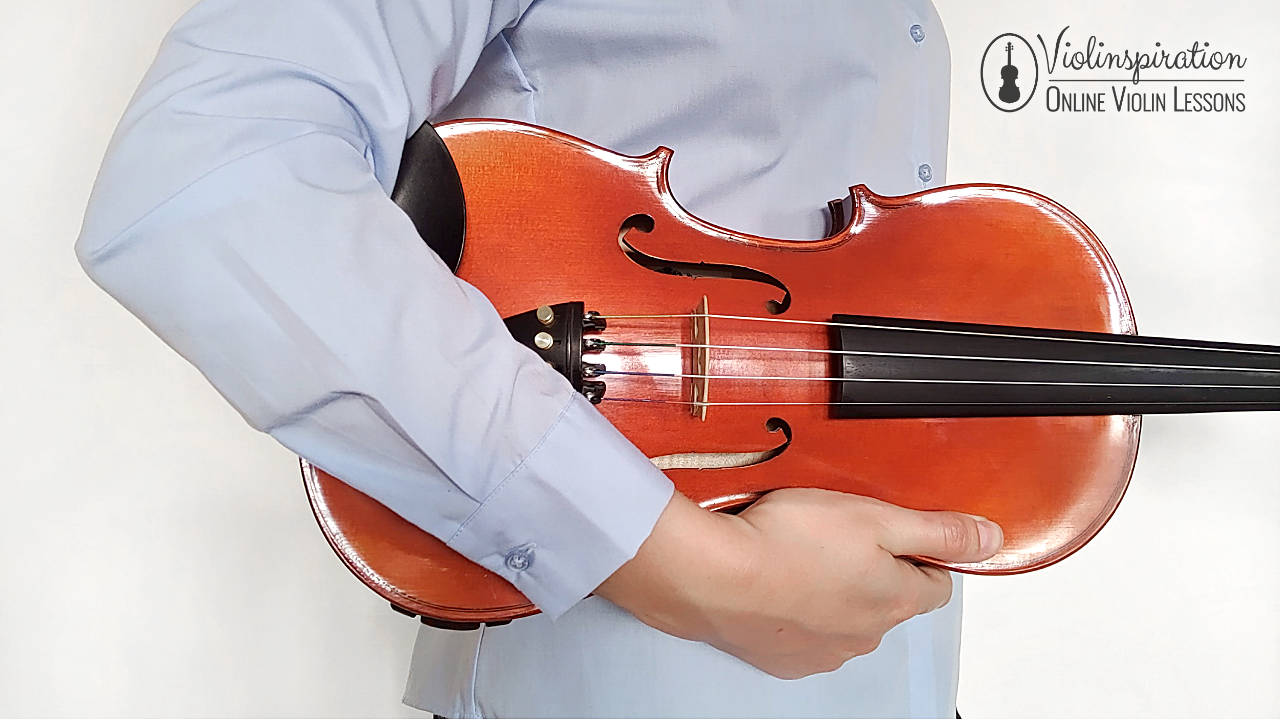
If sitting, an option to hold the violin is to prop the violin up on your leg. This is often seen in younger orchestra performances. You would have the violin resting on your left leg with the neck in your left hand. The bow will also be pointing up with just a gentle fist around the frog using your other hand.
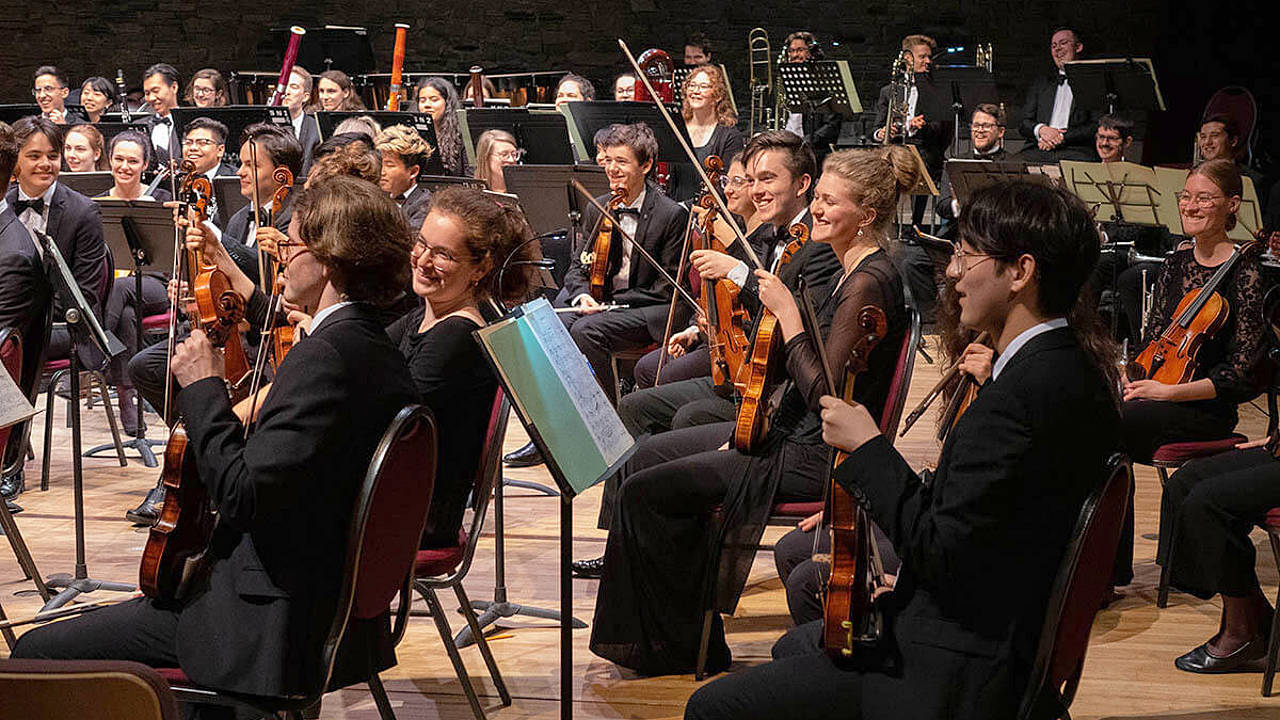
Final Note
You will want to build good habits by practicing intentionally and adjusting constantly. Take each step from this guide slowly when setting up. There is no need to rush; this is the foundation of your violin playing. Playing for long stretches of time can be strenuous and uncomfortable. You want to be able to play the violin with ease to avoid injury.
Additionally, tension often can go unnoticed until it is extremely painful. You want to avoid this by constantly checking in with your body. Another great way to avoid strain or tension is to stretch before and after violin playing. It is especially important to warm up the muscles in your shoulders, left hand, and right arm. There is a lot you can do to perfect your posture away from your instrument.
